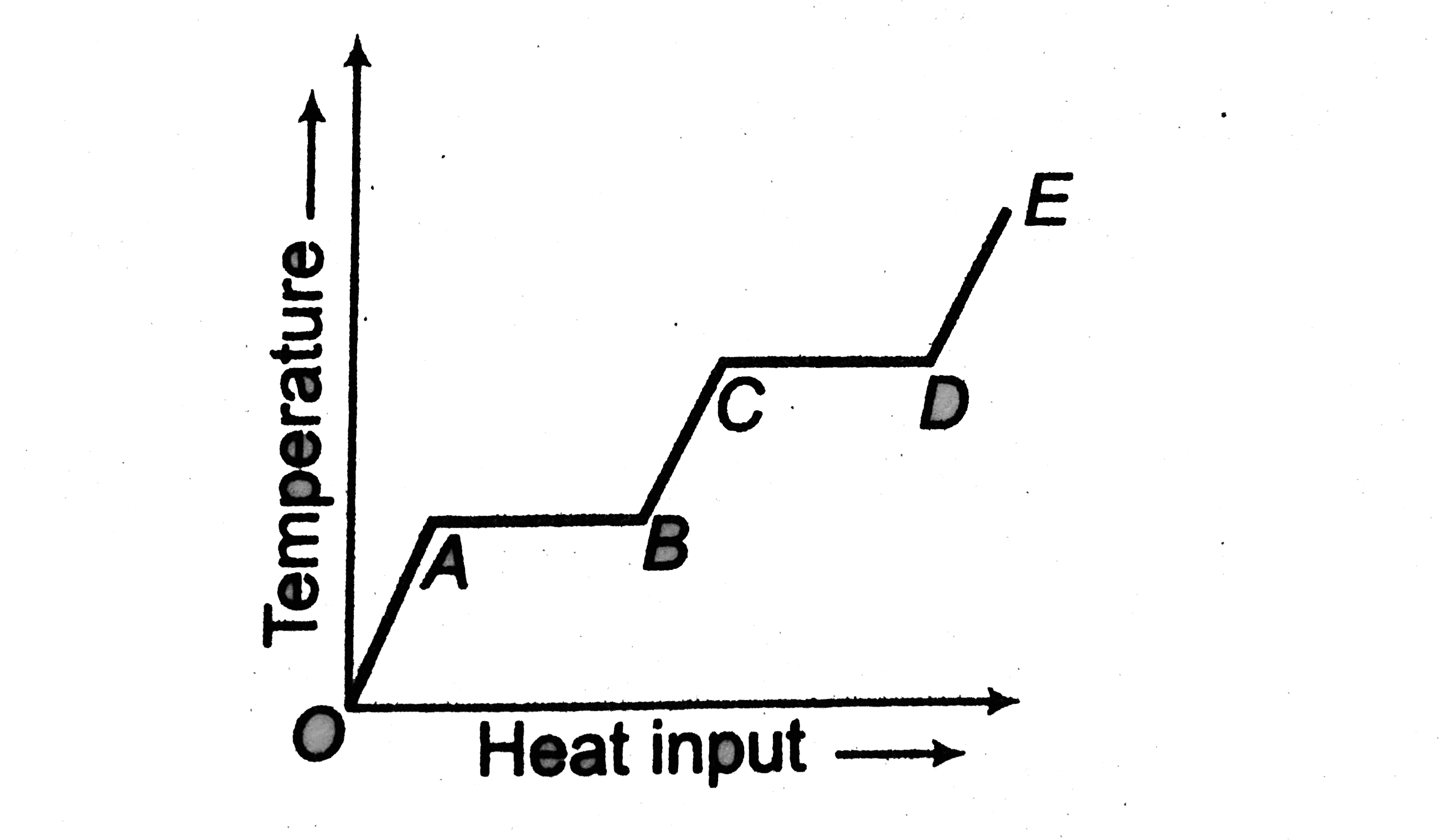In spite of supplying heat, the temperature of the melting solid does not change. Explain with reasons.
At the melting point, molecules of a solid move apart.
(ii) Different energies possessed by molecules.
(iii) Energy which is affected while heating
(iv) Energy which is affected during change in phase.
Similar Questions
Knowledge Check
On heating, the temperature of the melting solid
AincreasesBdecreasesCremains constantDmay increase or decrease depending upon the nature of the solidOn heating, the temperature of the melting solid
Aincreases.Bdecreases.Cremains constant.Dmay increase or decrease depending upon the nature of the solid.During heat exchange, temperature of a solid mass does not change. In this process, heat
Ain not being supplied to the massBis not being taken out from the massCmay have been supplied to the massDmay have been taken out from the mass
A solid material is supplied heat at a constant rate. The temperature of material is changing with heat input as shown in the figure. What does the slope of DE represent ?

View SolutionIf head a supplied to a solid, its temperature
View SolutionIf heat a supplied to a solid, its temperature
View SolutionA given substance of mass 'm' is in solid state at certain temperature. Arrange the following steps in proper sequence to calculate the total heat energy required to just convert the substance completely into gaseous state.
(A) Note down the specific latent heat of vapor ization of the substance and calculate the heat supplied to convert from liquid to gaseous state using the formula.
(B) Note down the melting point of the substance and calculate the heat supplied to increase the temperature of the solid to its melting point.
(C ) Note down the boiling point of the substance and calculate the heat supplied to increase the temperature of the substance from melting point to its boiling point.
(D) Add all the heat energies, it gives the resultant heat supplied to the solid to just convert it into gaseous state.
(E) Note down the specific latent heat of fusion of the substance and calculate the heat supplied to convert the substance from solid state to liquid state.
View SolutionA ginven substance of mass 'm' is in solid state at certain temperature. Arrange the following steps in proper sequence to calcualte the total heat energy required to just convert the substance completely into gaseous state.
(a). Note down the specific latent heat of vaporization of the substance and calculate the heat supplied to convert from liquid to gaseous state using the formula.
(b) Note down the melting point of the substance and calculate the heat supplied to increase the temperature of the solid to its melting point.
(c) Note down the boiling point of the substance and calculate the heat supplied to increase the temperature of the substance from melting point to its boiling point.
(d). Add all the heat energies, it gives the resultant hea supplied to the solid to just convert it into gaseous state.
(e) Note down the specific latent heat of fusion of the substance and calculate the heat supplied to convert the substance from solid state to liquid state.
View Solution
